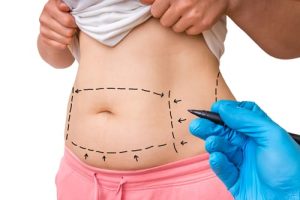What to Know About Tummy Tuck Recovery
Posted December 12, 2017 in Tummy Tuck Surgery
 While the tummy tuck is one of the most commonly performed cosmetic surgeries, it can also be one of the most extensive in regards to the recovery period. Abdominoplasty removes excess skin and fat that have accumulated during weight loss, pregnancy, and aging while tightening the separated and weak muscles. During your consultation, your doctor will give you an in-depth description of what to expect with your recovery; however, there are some things to keep in mind that will ensure the safest and most comfortable recovery possible.
While the tummy tuck is one of the most commonly performed cosmetic surgeries, it can also be one of the most extensive in regards to the recovery period. Abdominoplasty removes excess skin and fat that have accumulated during weight loss, pregnancy, and aging while tightening the separated and weak muscles. During your consultation, your doctor will give you an in-depth description of what to expect with your recovery; however, there are some things to keep in mind that will ensure the safest and most comfortable recovery possible.
Plan Ahead
Preparation is everything—the more you have lined up ahead of time, the more comfortable things will be. Depending on the nature of your job, you can expect to take 10 to 14 days off of work, and longer if your job is exceptionally strenuous. It is required that you have someone ready to drive you home, and it is beneficial for them to stay with you for the first one to two days. This person will help you with all basic activities such as getting out of bed, cleaning your drains, and removing any clothing. You will want to make sure that you have a comfortable resting place that is already laid out for you and stocked with plenty of pillows and healthy food that will be easy to prepare. During your recovery, a healthy diet and plenty of hydration will help speed up the healing process.
Maintain Your Drains
One drain is typically placed to aid in the healing process. This drain is a thin tube meant to remove excess blood or fluid for up to several days depending on the extent of your tummy tuck. You can expect to empty your drain every few hours on the first day and two to three times a day in the days following. Your doctor will provide you with detailed instructions regarding how to properly handle and clean your drains.
Start Moving Slowly
While you will not be entirely sedentary in the days and weeks following your tummy tuck, you will likely need to adjust your normal day-to-day activities. You will be swollen, bruised, tired, and in some pain for the first week after your surgery. A walker is used to ambulate for the first week so that you are flexed at the hips to decrease tension on the incision. Pain can be controlled with oral pain medication, and you are encouraged to wean off of them in the first week to avoid constipation and reliance upon the medication. Swelling should begin to dissipate after the first week. Some swelling may take up to three months to completely go away. An abdominal binder or snug garment is worn for six weeks after surgery to support the abdominal muscle repair and to reduce swelling.
In the days that follow, plan to rise to your feet as soon as possible to promote circulation and avoid blood clots. A lounge chair position is often comfortable. Ambulation is encouraged soon after surgery. This means short, leisurely walks around your house or neighborhood. You should avoid any strenuous paths or hills. While you want to move as much as you can, you need to be cautious that you do not strain yourself. Doing so may disrupt your healing process. It is recommended that you avoid any strenuous lifting or exercise for six weeks, as this may hurt your incisions. Once you do return to your normal exercise routine, listen to your body. If something hurts or doesn’t feel right, stop. Everyone heals at a different rate, and the most dangerous thing to do is push yourself before your body is ready.
Finally, make sure that you listen to your doctor’s orders. You have decided to undergo this surgery for yourself, so do not feel guilty about taking this time to ensure the best and safest recovery. Instead, you can admire your new flat and tight tummy!